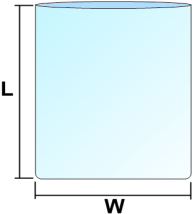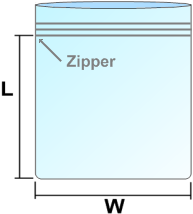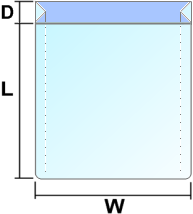Measuring boxes is as easy as 1-2-3. Box measurements always correspond to the inner dimensions of the box. This is done to ensure a snug and protective fit around your product.

/>
/>
1. length
2. width
3. depth
Allow a minimum of 3mm extra to each dimension for the fitting . Be sure that the length and width do correspond to the opening of the box.
You can also provide us with a board size of the box. To do this fully open out the carton until it is just a single flat sheet and measure the length and width of the board. This board size is very useful when quoting for die cut boxes. If entering a quote enter flute direction as length and the other direction as width (As style 0110). Leave the depth blank.
Corrugated Carton
This probably is the most common style of box (0201) with fold over flaps to seal at the top and bottom. It is also one of the most economical styles of box in that it produces very little waste and requires no origination for manufacturing unless it is to be printed.
Die-Cuts
A very common style of box that is manufactured with the use of a shaped die-cutting tools. This style of box ensure higher degrees of accuaracy in size and consistancy and allows for almost any shape or style of box to be manufactured. When a special size or style is required a tooling charge will be incurred as a one-off charge.
Fittings and Internal Packaging
Internal fittings often form an important part of a packs overall design. The fittings can be simply seperator pads to complex multipart Die-cut divisions. They perform a key role in the seperation and cushioning of products and are fundamental to the overall performance of a packs design. Common types of fittings are pads, divisions and scored seperation and void filling fittings. The use and design of fittings is always driven by the product and distribution requirement.
Standard and Common Styles:
Corrugated Board is made up of various liners and fluting:
Paper grades for the liner - outer and inner
(K) KRAFT - Virgin Kraft paper
(T2) TEST 2 - Partly recycled liner paper
(T) TEST 3 - Fully recycled liner
(C) CHIP - Waste based liners
(BW) FULLY BLEACHED WHITE - Fully bleached Kraft liner
(WT) WHITE TOP - White coated recycled liner
(MK MOTTLED KRAFT - Mottled white Kraft
(OY) OYSTER - Mottled test liner
Common Paper Weights
GSM=grammes per sq m
115/125 GSM
140/150 GSM
185/200 GSM
300 GSM
Common Flute Grades and Weights
Fluting is generally produced using waste based fluting medium (WBF), semi-chemical fluting (SC) medium is used for enhanced properties.
Flute Medium Weights
90 GSM WBF
105 GSM WBF - Most Common Flute Standard
112 SC and WBF
150 SC and WBF
175 SC and F
Wet strength adhesive can be used for certain applications
There are a number of common flute profiles or sizes
A FLUTE - 5mm - A - Good stacking and protection
B FLUTE - 3mm - B - Good puncture resistance + Most Common Grade
C FLUTE - 4mm - C - Good stacking and protection + Very Common Grade
E FLUTE - 1.5mm - E - Lightweight fine flute
F FLUTE - 1.2mm - F - Extra thin
BC FLUTE - Flute Double Wall 6mm - BC - Combination of B + C flutes
The various liners and fluting medium can be selected to produced A Board as a single wall board or double wall board.
Single Wall Board - 2 liners and single flute
Double Wall Board - 3 liners and double flutes
Triple Wall Board - 4 liners and three flutes
Common Board Grades
When choosing a board grade this may be a guide to common grades
Paper Combination:
125K/125T - B Flute - Light Standard Grade
150K/150T - B Flute - Common/Medium Grade/Postal Grade
200K/200T - B Flute - Heavier/Durable Board
300K/300T - B Flute - Very Heavy/Strong Board
To increase the cushioning or the stacking strength of the box change the 'B flute' for a 'C Flute'. For example 125K/125T - C Flute.
If you really want to beef up the packaging specification then change the single flute either 'B' or 'C' for a much stronger double wall (double fluted) board.
Example:
200K/200T/B Flute = is equal to 125K/125T Double Wall
The liners can also have special coatings, finishes or properties
Polythene
Anti Static
Conductive
Colour Wash
Water Resistant
Fire Resistant
Anti Abrasive
Acid Free
Clay Coated
Soft Tissue
Post Consumer/Recycled
Exposed Flute
Pre Print
Sesame Tape
Rippa Tape
Foam Lined






































